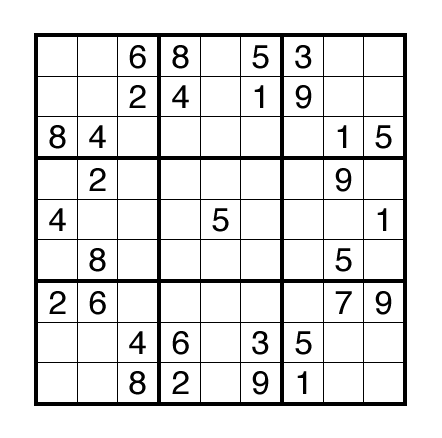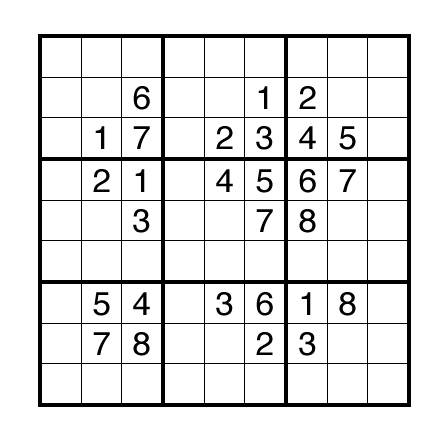Championship Chatter – Simply Classic
The Sudoku Grand Prix (GP) has certainly now shown a variety of test styles after the creative but unorthodox Turkish test this past weekend. I’m still not sure exactly what the GP is trying to be, and I have no idea what the “playoff” in Beijing will look like (does anyone know anything about the rules or puzzle designers?), but the list of 10 competitors to qualify is getting much clearer now. Quite incredible to have a different winner for each event so far.
Our test, like some others in the GP such as the UK test, had a pretty clear goal to have a lot of elegantly constructed sudoku in pretty simple styles to test basic sudoku skills. All our puzzles had fair, logical solution paths, and we expected many solvers would finish. And as I still think of this as a US Sudoku Qualifier first, and a GP contest piece second, I was glad we got two of the qualifying Americans to submit all of the answers even if one had a mistake. While this is now quite belated, congrats to Jason Zuffranieri for his US victory and to Bastien Vial-Jaime for the overall victory.
Here is the second pair of classic sudoku that appeared on that contest.

or solve online (using our beta test of Penpa-Edit tools)

or solve online (using our beta test of Penpa-Edit tools)
Themes: Both geometric and logical
Answer String: For the USSQT, the answer strings were a set of rows/columns encountered late in the puzzle. For this week, you can just hit the solved button on an honor system if you think you’ve solved it.
Design Notes (highlight to view): The third classic sudoku (and first here) was built around an even versus odd theme and recognizing this unusual partitioning of the digits will be key to making fast progress. A bunch of singles (either naked or hidden) can be found based on parity around the middle sections which finally breaks through to the final solution. The fourth classic sudoku (and second here) was constructed to have an early and pretty clear single sticking point aspect to it. The geometry suggests something should be present in the almost full rows or columns. If solvers focus on those most constrained positions in the first column, they will find a naked pair [89] that gets the whole solve going. While none of these classic puzzles required extremely difficult techniques, keeping the solving paths somewhat tight at the very start makes them good competition challenges in my mind.

By the amount they took me from shortest to longest: 1, 4, 3, 2 (with 2 taking nearly twice as long as 3).
For what it’s worth, after casually doing all four of these in paint I did find them all to be roughly the same difficulty. 4 took a little longer, but I blame that on paint; I find steps like that with good pencilmarks, and I’m much more willing to draw them in when I’m on paper.
Of course, that probably just means my times were all about equal to most contestants’ worst of the four…
My experience pretty well matches Scott’s. 2 was one of the few puzzles I didn’t solve during the test because I hit the sticking point near the beginning and put it aside pretty promptly. After the test when I learned how long it took to solve, I was happy with that decision.
One test-solver certainly got tripped up by it, even resolved it for a second time and it remained the slowest solve. A second tester has #2 as his quickest of the four by over a half minute (otherwise #1 is obviously fastest among the testers). This is the challenge I don’t think many sudoku solvers get when they might complain about an over/under-valued puzzle because there are a few orthogonal approaches to these puzzles and they are very hard to perfectly rate for all solvers when only one of the approaches will be the best and very different solvers will be disadvantaged however you mark it. It’s certainly a reason we aim for 100% finish as the team cutoff, so every different kind of challenge must be met by the people who make the team. It’s also why we try to get as many test-solvers as possible.